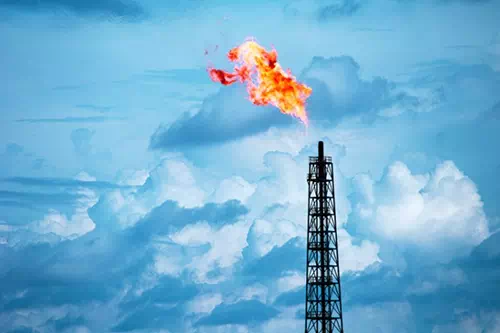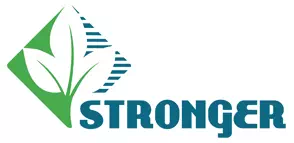

|
Well Completion When drilling has been completed, a number of steps may be needed before oil or natural gas production begins. There are six basic steps to well completion:
Each of these steps is discussed below. Also on this page is a summary of Federal Laws and Regulations Affecting Well Completion. Well pad construction. The process of hydraulic fracturing begins after well construction. Production wells may be drilled in the vertical direction only or paired with horizontal or directional sections. Vertical well sections may be drilled hundreds to thousands of feet below the land surface and lateral sections may extend 1000 to 6000 feet away from the well. Testing. Testing is performed to verify whether the hydrocarbon-bearing formations are capable of producing enough hydrocarbons to warrant well completion and production. As many as three types of tests may be performed before the final (production) string of casing is installed (i.e., coring, wireline logging, and drill stem testing). Perforation. Production casing is cemented in the wellbore. The cement serves to seal the void space between the casing and the walls of the wellbore (annulus) and to prevent the migration of formation fluids up the annulus. For formation fluid (e.g., oil, gas, and water) to enter the well, the casing must be perforated. Stimulation (hydraulic fracturing and acidizing). "Unconventional" reservoirs can cost-effectively produce gas only by using a special stimulation technique, like hydraulic fracturing, or other special recovery process and technology. This is often because the gas is highly dispersed in the rock, rather than occurring in a concentrated underground location. Extracting unconventional oil and natural gas is relatively new. Coalbed methane production began in the 1980s; shale gas extraction is even more recent. The main enabling technologies, hydraulic fracturing and horizontal drilling, have opened up new areas for oil and gas development, with particular focus on reservoirs such as shale, coalbed and tight sands. Hydraulic Fracturing produces fractures in the rock formation that stimulate the flow of natural gas or oil, increasing the volumes that can be recovered. Wells may be drilled vertically hundreds to thousands of feet below the land surface and may include horizontal or directional sections extending thousands of feet. Fractures are created by pumping large quantities of fluids at high pressure down a wellbore and into the target rock formation. Hydraulic fracturing fluid commonly consists of water, proppant and chemical additives that open and enlarge fractures within the rock formation. These fractures can extend several hundred feet away from the wellbore. The proppants - sand, ceramic pellets or other small incompressible particles - hold open the newly created fractures. Once the injection process is completed, the internal pressure of the rock formation causes fluid to return to the surface through the wellbore. This fluid is known as both "flowback" and "produced water" and may contain the injected chemicals plus naturally occurring materials such as brines, metals, radionuclides, and hydrocarbons. The flowback and produced water is typically stored on site in tanks or pits before treatment, disposal or recycling. In many cases, it is injected underground for disposal. In areas where that is not an option, it may be treated and reused or processed by a wastewater treatment facility and then discharged to surface water. Another stimulation method, acidizing, involves pumping acid, most frequently hydrochloric acid, to the formation, which dissolves soluble material so that pores open and fluid flows more quickly into the well. Both fracturing and acidizing may be performed simultaneously if desired, in an acid fracture treatment. Stimulation may be performed during well completion, or later during maintenance, or workover, operations, if the oil or natural gas carrying channels become clogged over time. Hydraulic fracturing activities that utilize certain diesel fuels are subject to the requirements of the Safe Drinking Water Act’s Underground Injection Control (UIC) program. Surface water discharges of the flowback are regulated by the National Pollutant Discharge Elimination System (NPDES) program, which requires flowback to be treated prior to discharge into surface water or underground injection prior to discharge. Treatment is typically performed by wastewater treatment facilities. Underground injection of flowback is regulated by either EPA's Underground Injection Control (UIC) program or a state with primary UIC enforcement authority. Injection of natural gas production wastes would be considered a Class II injection well. Hydraulic fracturing activities that utilize certain diesel fuels are subject to the requirements of the Safe Drinking Water Act's Underground Injection Control (UIC) program. When companies have an excess of unused hydraulic fracturing fluids, they have two basic options: either use them in another job or dispose of them. When disposing, a hazardous waste determination should be made. Produced water from oil and natural gas operations is, by volume, the largest waste stream associated with oil and natural gas production. The content of produced water typically varies depending on the geographic location of the field, the type of hydrocarbons being produced, and other features associated with the geology and extraction techniques used. In some instances across EPA Region 8, produced water from natural gas extraction (e.g., CBM wells) is clean enough to be used for irrigation or watering livestock without prior treatment; however, it is also common to find chemicals in produced water with concentrations that can harm aquatic life and crops when they are discharged or used for irrigation, respectively. Thus, produced water discharged from oil and natural gas production is subject to various water permitting guidelines under CWA and SDWA. The four primary methods of disposal of liquid waste generated during well stimulation include (follow links to regulatory discussions for each discharge/disposal method):
In some states, produced water may also be beneficially used by road spreading for dust suppression or deicing. Solid wastes generated during well stimulation include drill cuttings, sediment, tank sludge from storage, spent filters, etc. Some solid wastes are uniquely associated with oil and natural gas exploration and production, and are exempt from Resource Conservation and Recovery Act (RCRA) hazardous waste regulations. Many other wastes generated during production are not unique to these activities and therefore may be considered hazardous waste. For a regulatory discussion of solid waste, see the RCRA section. Production Equipment Installation. When drilling, casing, and testing operations are completed, the drilling rig is removed and the production equipment is installed. In most cases, tubing is installed in the well which carries the liquids and oil or natural gas to the surface. At the surface, a series of valves, collectively called the "Christmas Tree" because of its appearance, is installed to control the flow of fluid from the well. Pumps are also added if the formation pressure is not sufficient to force the formation fluid to the surface. Equipment is usually installed onsite to separate natural gas and liquid phases of the production and remove impurities. Finally, a pipeline connection or storage vessel (tank) is connected to the well to facilitate transport or store the product (oil or condensate), and produced water. In the case of natural gas, which cannot be stored easily, a pipeline connection is necessary before the well can be placed on production. One or more pits may be constructed. These may include a skimming pit, which reclaims residual oil removed with water from the product stream; a sediment pit, which stores solids that have settled out in storage tanks; or an evaporation or percolation pit, which are used to dispose of produced water. Well closure (plugging and abandonment) Production from a well may be stopped for several reasons. If it is a temporary stoppage (e.g., awaiting a workover, connection to pipeline, temporary lack of market), the well is shut-in. If the stoppage is to be permanent, the well could be repurposed (maybe turned into a UIC Class II injection well for disposal of produced water from other wells). The final option for a well that is beyond use is plugging and abandonment of the well. The goal of this procedure is to prevent fluid migration within the wellbore, which could contaminate aquifers or surface water. Oil and natural gas producing states all have specific regulations governing the plugging and abandonment of wells on state land. The Bureau of Land Management has regulations governing the plugging and abandonment of wells of federal land and Indian country. Plugging and abandonment also includes returning the land surrounding the well site to be reclaimed to resemble its original condition. When a well is plugged, the downhole equipment is removed, and the perforated parts of the wellbore are cleaned of fill, scale and other debris. A minimum of three cement plugs are then placed, each of which are 100 to 200 feet long. The first is pumped into the perforated (production) zone of the well, in order to prevent the inflow of fluid. A second is placed in the middle of the wellbore. A third plug is placed within a couple hundred feet of the surface. Additional plugs may be placed anywhere within the wellbore when necessary. Fluid with an appropriate density is placed between the cement plugs in order to maintain adequate pressure. During this process, the plugs are tested to verify plug placement and integrity. Finally, the casing is cut off below the surface, capped with a steel plate welded to the casing, and surface reclamation is undertaken to restore natural soil consistency and plant cover. Once the well is permanently plugged and abandoned, it is highly impractical to re-access the reservoir. Therefore, if at all possible, shut-in of a well is preferable over plugging. Potentially Applicable Regulations
More Resources NaturalGas.org . An educational website developed and maintained by the Natural Gas Supply Association that covers a variety of topics related to the natural gas industry. The purpose of this website is to provide visitors with a comprehensive information source for topics related to natural gas, and present an unbiased learning tool for students, teachers, industry, media, and government. EPA's Study of Hydraulic Fracturing for Oil and Gas and Its Potential Impact on Drinking Water Resources. A review of available scientific literature and data to assess the potential for activities in the hydraulic fracturing water cycle to impact the quality or quantity of drinking water resources, and to identify factors that affect the frequency or severity of those impacts. Onshore Oil and Natural Gas Storage Vessel Compliance Alert. EPA and state investigations have identified Clean Air Act compliance concerns regarding significant emissions from storage vessels, such as tanks or containers, at onshore oil and natural gas production facilities. The Alert discusses certain engineering and maintenance practices that may address compliance concerns and reduce emissions. Produced Water Study. EPA completed a study that takes a holistic look at how the Agency, states, tribes and stakeholders regulate and manage wastewater from the oil and natural gas industry. Natural Gas Star Program. The Natural Gas STAR Program provides a framework for Partner companies with U.S. oil and gas operations to implement methane reducing technologies and practices and document their voluntary emission reduction activities. By joining the Program, Partners commit to: 1) evaluate their methane emission reduction opportunities, 2) implement methane reduction projects where feasible, and 3) annually report methane emission reduction actions to the EPA. Controlling Air Pollution from the Oil and Natural Gas Industry. EPA’s Clean Air Act regulations for the oil and natural gas industry help combat climate change and reduce air pollution that harms public health. The regulations apply to equipment and activities used for the onshore oil and natural gas industry. Oil and Gas Sector. EPA overview of Oil and Gas Extraction Sector (NAICS 211). Greenhouse Gas Reporting (GHGRP) and the Oil and Gas Industry. The GHGRP covers emissions from different aspects of the oil and natural gas industry through several of its subparts. Click on a number in the diagram below to find out how the GHGRP addresses emissions from different phases of oil and gas extraction, production, transport, and use. Oil and Gas Waste. Wastes generated from crude oil and natural gas exploration and production (E&P wastes) are generally subject to regulation under Subtitle D of the Resource Conservation and Recovery Act (RCRA) and state regulations, and many state governments have specific regulations and guidance for E&P wastes. In addition, some states are developing legislation and regulations in response to the increase in the use of hydraulic fracturing, including requirements related to waste management. Oil and Gas Extraction Effluent Guidelines. The regulations cover wastewater discharges from field exploration, drilling, production, well treatment and well completion activities. These activities take place on land, in coastal areas and offshore. The Oil and Gas regulations apply to conventional and unconventional oil and gas extraction with the exception of coalbed methane. The regulatory requirements are incorporated into NPDES permits. Produced Water Report, Regulations and Practice Updates. A 2023 report published by the Ground Water Protection Council. This report covers the most significant regulatory, operational, and technological advancements relevant to produced water.
|
Funded by EPA through a Cooperative Agreement
|
 |
||
About | Technical Topics | Federal Statutes & Regulations - US EPA | Federal Statutes & Regulations - Non-EPA | Emergency Response |
|
EPA Resources | State/Local Resources | Other Resources | Acronyms | Search | Disclaimer | Home



